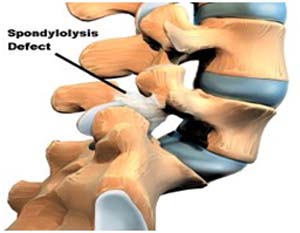



Spondylosis India offers information on Spondylosis in India, Spondylosis cost India, Spondylosis hospital in India, Delhi, Mumbai, Chennai, Hyderabad & Bangalore, Spondylosis Surgeon in India
What is Spondylosis?
Cervical Spondylosis
Lumbar Spondylosis
Causes of Spondylosis
Symptoms of Spondylosis
Diagnosis of Spondylosis
Treatments for Spondylosis
What is Spondylosis?
In spondylosis there is a spinal degeneration of a discs or spinal joints.
Spondylosis is caused by abnormal wear on the cartilage and bones of the neck (cervical vertebrae) with degeneration and mineral deposits in the cushions between the vertebrae (cervical disks).

There are two types of spondylosis:
Cervical Spondylosis
The vertebrae (the component bones of the spine) gradually form bone spurs, and their shock-absorbing disks slowly shrink. These changes can alter the alignment and stability of the spine. They may go unnoticed, or they may produce problems related to pressure on the spine and associated nerves and blood vessels. This pressure can cause weakness, numbness, and pain in various areas of the body.
Lumbar Spondylosis
It is a degenerative disorder in which the vertebral bone or the inter-vertebral disc becomes soft and loses shape, because of this the spine loses its flexibility. Lumbar spondylosis appears to be a nonspecific aging phenomenon. Most studies suggest no relationship to lifestyle, height, weight, body mass, physical activity, cigarette and alcohol consumption, or reproductive history. Adiposity is seen as a risk factor in British populations, but not Japanese populations. The effects of heavy physical activity are controversial, as is a purported relationship to disk degeneration.
Causes of Spondylosis
Causes of Cervical Spondylosis
- Thick necks with hump at the back
- Long backs
These body types are more prone to cause strain or tear of the neck tissues.
Causes of Lumbar Spondylosis
There are five vertebrae in lumbar region like the cervical vertebrae these also have a specific gap between them. Due to aging injury of back suddenly falling down or wearing of bones the gap between these vertebrae becomes abnormal. Consequently the nerves passing through these get pressurized and because of this pressure it produces the produces the above mentioned symptoms of lumbar spondylosis.
Symptoms of Spondylosis
Symptoms of Cervical Spondylosis
![]() Neck pain (may radiate to the arms or shoulder)
Neck pain (may radiate to the arms or shoulder)
![]() Loss of sensation or abnormal sensations of the shoulders, arms, or (rarely) legs
Loss of sensation or abnormal sensations of the shoulders, arms, or (rarely) legs
![]() Weakness of the arms or (rarely) legs
Weakness of the arms or (rarely) legs
![]() Neck stiffness that progressively worsens
Neck stiffness that progressively worsens
![]() Loss of balance
Loss of balance
![]() Headaches, particularly in the back of the head
Headaches, particularly in the back of the head
![]() Loss of control of the bladder or bowels (if spinal cord is compressed)
Loss of control of the bladder or bowels (if spinal cord is compressed)
Progressive neck pain is a key indication of cervical spondylosis. It may be the only symptom in many cases. Examination often shows limited ability to flex the head to the side (bend the head toward the shoulder) and limited ability to rotate the head.
Weakness or sensation losses indicate damage to specific nerve roots or to the spinal cord. Reflexes are often reduced.
Symptoms of Lumbar Spondylosis
![]() Stiffness and pain in lower back with poor movements such as difficulty in bending forwards.
Stiffness and pain in lower back with poor movements such as difficulty in bending forwards.
![]() Shooting type of pain in buttocks and legs
Shooting type of pain in buttocks and legs
![]() There may be pain in the back of the legs after a long walk.
There may be pain in the back of the legs after a long walk.
![]() Heaviness in back,legs and foot.
Heaviness in back,legs and foot.
![]() Stress at the above mentioned parts of the body.
Stress at the above mentioned parts of the body.
Diagnosis of Spondylosis
![]() A pain in the neck or in the lumbar region that continues to get worse is a sign of cervical spondylosis.
A pain in the neck or in the lumbar region that continues to get worse is a sign of cervical spondylosis.
![]() A spine X-ray shows the abnormalities that indicate the cervical spondylosis.
A spine X-ray shows the abnormalities that indicate the cervical spondylosis.
![]() An X-ray of lower lumbar spine may reveal degenerative changes in this region.
An X-ray of lower lumbar spine may reveal degenerative changes in this region.
![]() A CT scan or spine MRI confirms the diagnosis.
A CT scan or spine MRI confirms the diagnosis.
![]() A Myelogram (X-ray or CTscan after injection of dye into the spinal column)may be recommended to clearly identify the extent of injury.
A Myelogram (X-ray or CTscan after injection of dye into the spinal column)may be recommended to clearly identify the extent of injury.
Treatments for Spondylosis
Non Surgical Treatment of Cervical Spondylosis
Analgesic and muscle relaxants are advised in case of pain. In more severe cases doctor may recommend cortisone injections near the joints of the vertebral bodies which will relieve the pain and swelling.
Non operative treatment for cervical spondylosis may include temporary brace immobilization, traction, physical therapy (exercises, strength training, massage, mobilization, and physical modalities such as ultrasound, electrical stimulation, heat), and medications (analgesics, NSAIDs, muscle relaxants, corticosteroids).
Non Surgical Treatment of Lumbar Spondylosis
Most symptomatic cases of lumbar spondylosis / disc degeneration resolve with conservative treatment. The absolute best treatment has yet to be determined. A short course, two days or so, of bed rest seems to be helpful.
Medications such as non-steroidal anti-inflammatory drugs and muscle relaxants are often prescribed. In some cases, steroids either taken orally or injected into the epidural space may be used. Physical therapy and a home exercise program may be helpful.
Surgical Treatment
Most spondylosis patients respond well to non-surgical treatments, so spine surgery is seldom needed to treat spondylosis.
If the medical treatment and physiotherapy fails, and the condition is severe, where the nerves are affected, surgery may be required. Decompression of the nerve is done to relieve the nerve which is compressed by the bones and the disc.
Degeneration of the lumbar spine is described as lumbar spondylosis or degenerative disc disease and may lead to spinal stenosis (narrowing of the spinal canal), vertebral instability and/or malalignment, which may be associated with back pain and/or leg symptoms. This review considers the available evidence on the procedures of spinal decompression (widening the spinal canal or laminectomy), nerve root decompression (of one or more individual nerves) and fusion of adjacent vertebrae. There is moderate evidence that instrumentation can increase the fusion rate, but any improvement in clinical outcomes is probably marginal. The effectiveness of intra-discal electrotherapy (IDET) remains unproven. Only preliminary results are available on disc replacement and it is not possible to draw any conclusions on this subject.
Spondylosis Surgery, Spondylosis, Surgery For Cervical Spondylosis, Spondylosis Treatment India, Treatment Of Spondylosis, Cervical Spondylosis, Spondylosis India, Spine, Surgery, India Hospital Tour, Cost Spondylosis Surgery India, Less Price Spondylosis Surgery India, Low Cost Spondylosis Surgery India, Reinforcement Surgery, Cervical Spondylosis Surgery, Cervical Spondylosis Surgery Blogs, Neck Pain, Subluxation, Spondyloptosis, Spine, Paresthesia, Arthritis, Osteoarthritis, Instability